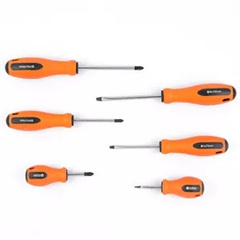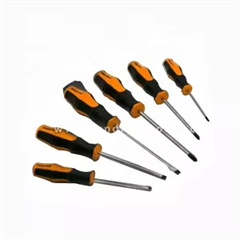Choosing the right types of knives for your kitchen is essential for efficient and safe food preparation. Different knives are designed for specific tasks, and having a variety of knives at your disposal will make your cooking experience more enjoyable. Here are some common types of knives and their specific uses:
- Chef’s Knife (or Cook’s Knife):
- Blade Length: 8-10 inches (20-25 cm)
- Use: An all-purpose knife for chopping, slicing, dicing, and mincing a wide range of ingredients. The curved blade allows for a rocking motion.
- Paring Knife:
- Blade Length: 3-4 inches (7.5-10 cm)
- Use: Ideal for intricate tasks like peeling, trimming, and detailed cutting.
- Serrated Bread Knife:
- Blade Length: 8-10 inches (20-25 cm)
- Use: Designed with a serrated edge for slicing bread without crushing it. Also useful for slicing tomatoes and other soft fruits.
- Utility Knife:
- Blade Length: 4-6 inches (10-15 cm)
- Use: A versatile knife for tasks that are too small for a chef’s knife but larger than a paring knife. Useful for cutting, slicing, and trimming various ingredients.
- Boning Knife:
- Blade Length: 5-6 inches (12.5-15 cm)
- Use: Designed for removing bones from meat, poultry, and fish. The narrow, flexible blade allows for precise cuts.
- Santoku Knife:
- Blade Length: 5-7 inches (12.5-17.5 cm)
- Use: A Japanese knife similar to a chef’s knife, known for its versatility in slicing, dicing, and chopping. It has a flatter blade profile and typically features a Granton edge (dimples on the blade) to prevent food from sticking.
- Cleaver:
- Blade Length: Varies (typically 6-12 inches or 15-30 cm)
- Use: A heavy-duty knife with a thick, rectangular blade. It’s used for tasks like chopping through bones and tougher cuts of meat.
- Fillet Knife:
- Blade Length: Varies (typically 6-9 inches or 15-23 cm)
- Use: Designed for filleting fish and removing skin from delicate meats. The flexible blade allows for precise cuts along the bones.
- Carving Knife:
- Blade Length: 8-12 inches (20-30 cm)
- Use: Used for slicing cooked meats, such as roasts, hams, and turkeys, into thin, even slices.
- Cleaver:
- Blade Length: Varies (typically 6-12 inches or 15-30 cm)
- Use: A heavy, rectangular knife with a thick spine, suitable for chopping through bones, large cuts of meat, and dense vegetables.
- Nakiri:
- Blade Length: 6-7 inches (15-17.5 cm)
- Use: A Japanese knife specifically designed for slicing, dicing, and chopping vegetables. It features a straight blade edge and squared-off tip.
- Tomato Knife:
- Blade Length: 4-5 inches (10-12.5 cm)
- Use: Specialized knife with a serrated edge for cleanly slicing tomatoes and other delicate fruits and vegetables.
- Deba Knife:
- Blade Length: Varies (typically 6-8 inches or 15-20 cm)
- Use: A Japanese knife primarily used for filleting and preparing fish, including fish with bones.
When choosing knives, consider factors such as blade material, handle comfort, and your preferred cooking style. Investing in high-quality knives and maintaining their sharpness will enhance your cooking experience and allow you to tackle a wide range of culinary tasks with confidence.























